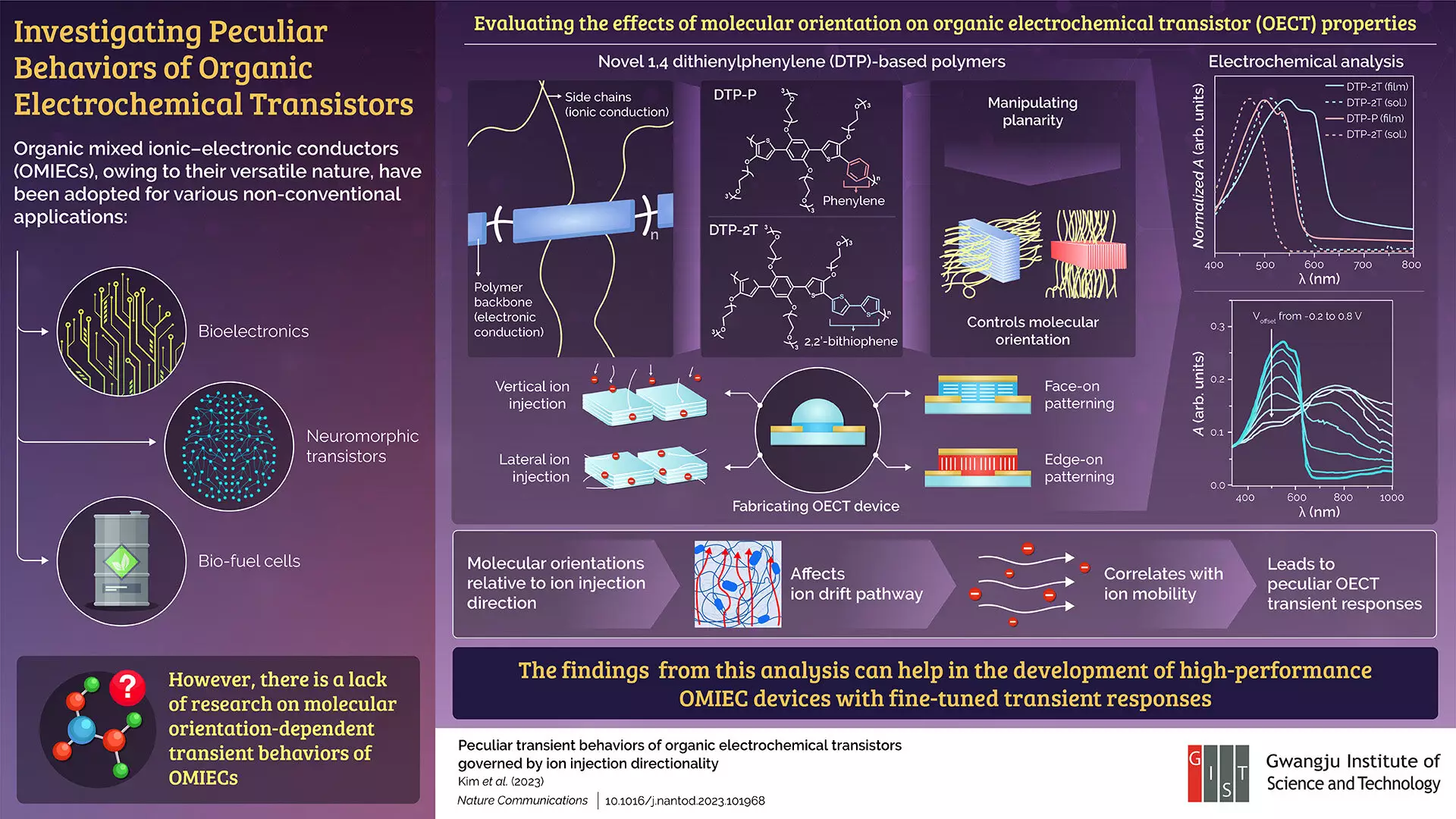Organic mixed ionic-electronic conductors (OMIECs) have gained significant attention in recent years for their unique properties and potential applications in various fields. However, despite their increasing popularity, there is still a lack of research on the transient behaviors of these conductors. In a groundbreaking study, an international team of researchers led by Professor Myung-Han Yoon has explored the correlation between molecular orientation and the characteristics of OMIECs using an organic electrochemical transistor (OECT) platform.
The study, published in Nature Communications, aimed to fill the gap in our understanding of organic mixed ionic-electronic conductors by investigating the transient behaviors governed by variations in molecular orientation. The team synthesized two new OMIECs, DTP-2T and DTP-P, with different molecular orientations but similar electronic and ionic properties. By manipulating the polymer backbone planarity, the researchers were able to control the dominant molecular orientation and observe its effect on the properties of OECT devices.
One of the key findings of the study was the correlation between ion injection direction and the length of the ion drift pathway. By changing the injection direction relative to the molecular orientation, the researchers observed peculiar transient responses in the OECT devices. This phenomenon was attributed to the indirect correlation between ion mobility within the polymers and the length of the ion drift pathway. These insights provide a unique perspective on the molecular orientation-dependent characteristics of OECT devices.
The implications of this study are significant, particularly in the field of spiking neural networks (SNNs) and bioelectronics. OECTs have been recognized for their potential in mimicking the computing mechanisms of neurons and synapses in SNNs. By understanding the dynamic behaviors of OECTs at the frequency domain, researchers can further explore their applications in SNN architectures. The findings of this study pave the way for the development of more efficient and capable SNN-based computing systems that offer increased computation speed and reduced energy consumption.
In addition to its significance in SNN architectures, the study also has implications for the design and development of advanced organic mixed conductor materials for biomolecular and biosignal sensors. By gaining a deeper understanding of the correlation between molecular orientation and transient behaviors, researchers can tailor the properties of OMIECs to enhance their sensing capabilities. This opens up possibilities for the creation of more sensitive and selective sensors for various applications, including biomedical diagnostics and environmental monitoring.
The study conducted by Professor Myung-Han Yoon and his team sheds light on the fascinating world of organic mixed ionic-electronic conductors. By investigating the transient behaviors of OMIECs governed by variations in molecular orientation, the researchers have provided valuable insights into the design and application of these materials. The correlation between ion injection direction and the length of the ion drift pathway highlights the role of molecular orientation in the properties of OECT devices. With further research and development, OMIECs hold great potential for revolutionizing fields such as bioelectronics, neuromorphic computing, and bio-fuel cells, offering new possibilities for innovation.



Leave a Reply